Sacramento’s Mexican restaurants are considering switching to electric cooking. Here’s why
Climate change is global but the actions we take here in Sacramento play a role in shaping our environmental future. The Sacramento Bee is undertaking a collaboration with you to examine and celebrate bold and ambitious climate actions that have yielded evidence that they’re making progress here and elsewhere. The goal is to engage you and your neighbors in a hopeful discussion about how we can face climate change with urgency and equity.
The unofficial dean of Sacramento’s Mexican restaurants, Ernesto Delgado sipped coffee and watched closely as the devices that one day might rule his kitchens spat out rice, beans and carnitas so tender they could be shredded with tongs and a spoon.
Delgado had brought his staff from Mayahuel and La Cosecha in downtown Sacramento and Mesa Mercado in Carmichael to see how a pair of electric cookers from a German company called Rational — the iCombi Pro and the iVario Pro — might fit in their kitchens.
The iCombi Pro is an electric oven with adaptable features for grilling, frying or steaming its contents. The iVario Pro more closely resembles a tilt skillet or braising pan that allows chefs to evenly cook and transfer food.
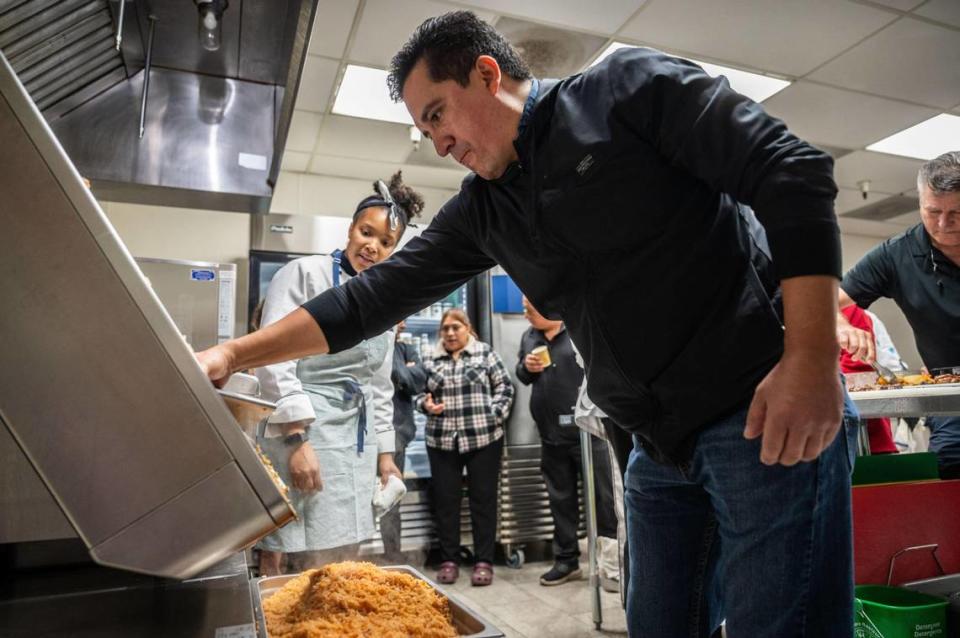
It’s not yet clear when, if ever, new Sacramento restaurants will be required to cook using electricity instead of gas. But the benefits of electric cooking are becoming clearer, from reduced carcinogen exposure to lower greenhouse gas emissions, and grant programs could cut costs of switching for some.
Now the question is: Can traditional Mexican food taste as scrumptious when cooked without a flame?
Food from electric appliances still needs to taste as good as that from gas for restaurateurs to consider making a switch. Delgado and his crew observed and sampled as Rational’s company chef whipped up pozole, flan and a deliciously tender octopus.
That final dish was fitting, seeing as Delgado will open a pair of seafood restaurants called Octopus and Octopus Baja in downtown and midtown Sacramento next year. After the taste-test at Fantastic Kitchen, a commercial culinary demonstration space just west of Cal Expo, Delgado was considering equipping his future restaurants with electric cookers — tradition be damned.
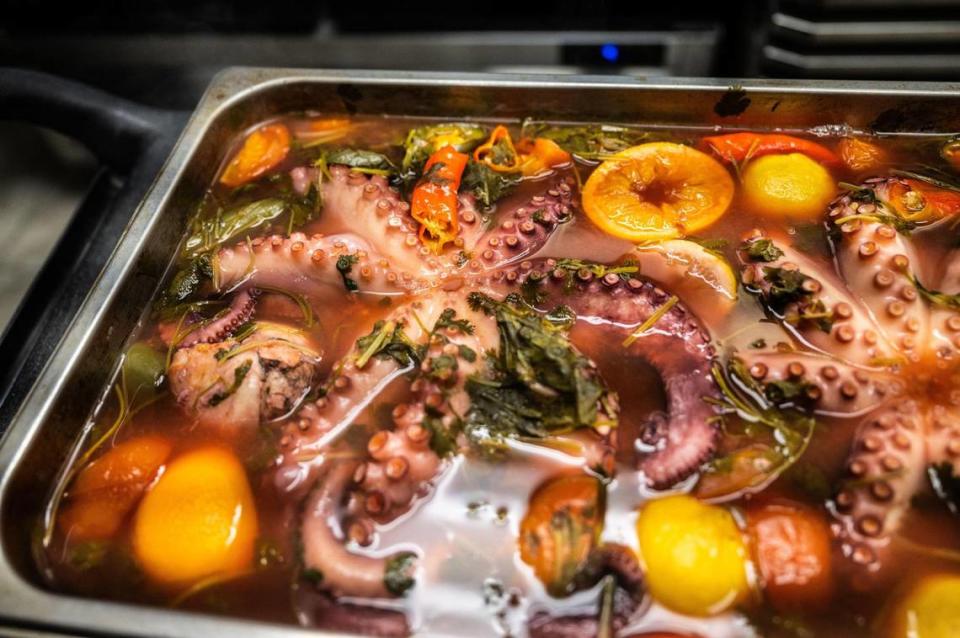
“A lot of times in Mexican restaurants, we know our food and … we know our style of cooking, our recipes,” Delgado said. “A lot of times, our teams (have) felt like this type of equipment is not for them because they’re so used to the traditional style of cooking. But when you see it in front of your own eyes, when you taste it, it just really makes you see that it is possible for our kitchens to do traditional recipes in a more modernized fashion.”
Chinese restaurants have been among the most vocal opponents to the electrification of commercial kitchens, arguing that gas is essential to create the smoky “wok hei” that defines certain dishes. But Mexican and Cali-Mex food have their roots in gas cooking, a cultural stumbling block on California’s path toward electrification.
Those preconceived notions are starting to be challenged, thanks to improved technology and soon-to-be-available grant money aimed at one of Sacramento’s oldest neighborhoods: Northgate, where 44% of residents identified as Hispanic or Latino compared to 26% citywide in the 2020 U.S. Census. Located in North Sacramento next to its sister neighborhood Gardenland, its community bonds have persevered through challenging economic circumstances.
Now, it could be on the cutting edge of Sacramento’s cooking scene.
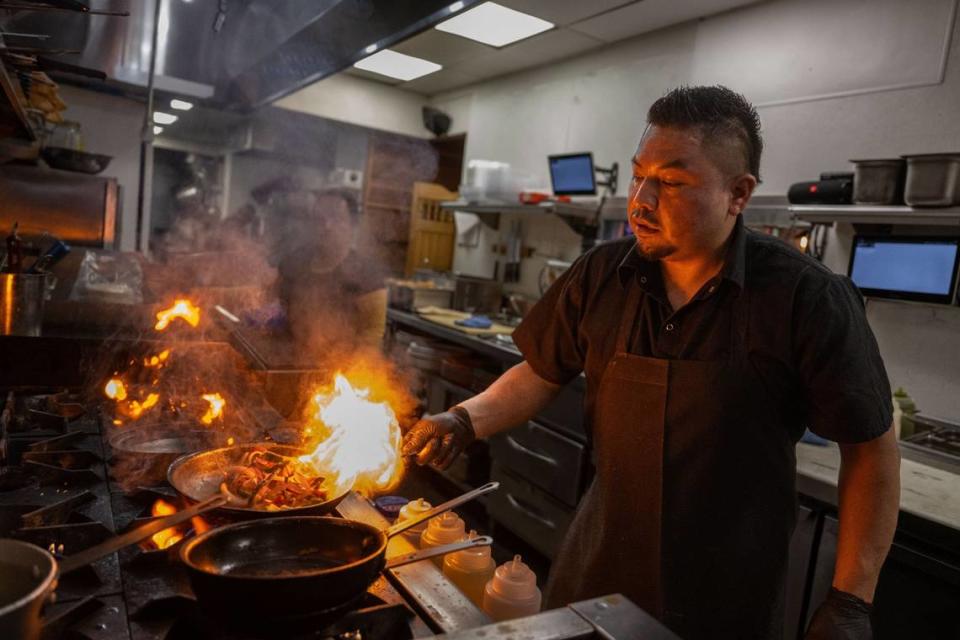
TRADITION VS. MODERNITY
Manuela Luna Gomez opened El Mercadito Mexican Market with her father in 1989 at 2868 Northgate Blvd., Suite 101. Her son Miguel Gomez began helping out around the age of 12, and still lends a hand when available nearly 20 years later.
El Mercadito is North Sacramento’s top spot for masa, the nixtamalized corn dough used to make tamales, corn tortillas and pupusas. There is also a prepared food menu of tortas, tacos, burritos and more, which most customers enjoy off-site unless they can snag one of El Mercadito’s few tables.
It is traditional Mexican food, which means lard, Gomez said. While he is interested in electrified appliances, El Mercadito’s staff currently melts the rendered pork fat over gas grills to make carnitas or menudo. An electric cooker might be easier and healthier, but it might also rob the dishes of their rich flavor.
“If we do this transition, I’m not exactly sure how things will be cooked,” Gomez said.
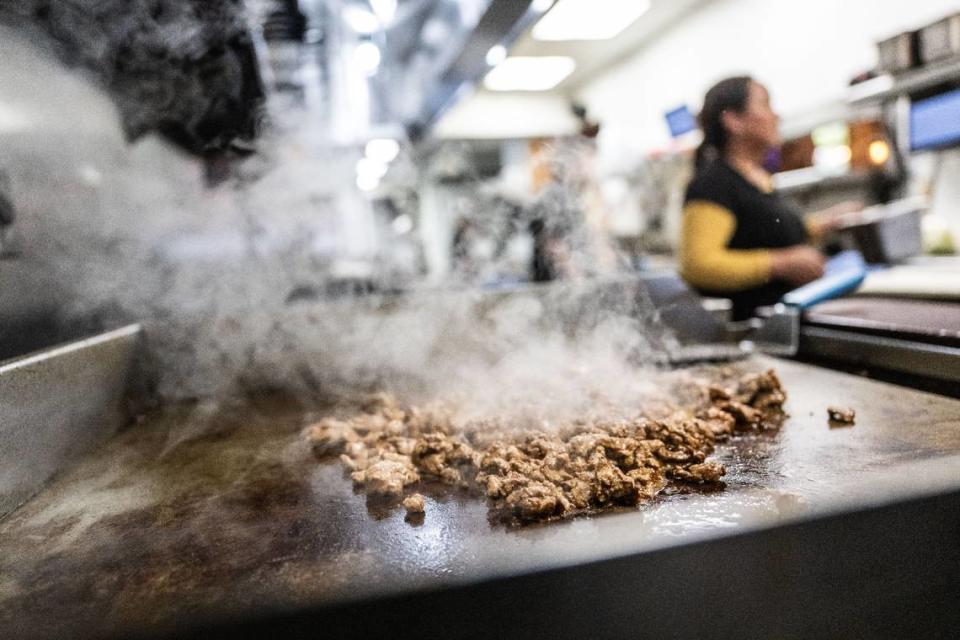
The exact date of a transition to electric cooking has yet to be determined.. The Sacramento City Council passed an ordinance in 2021 that would ban gas hookups in newly-constructed buildings three stories or less beginning in 2023, with an exemption for restaurants until 2026. But city staff said earlier this year that they would not enforce the ordinance while litigation remained pending.
The California Restaurant Association sued the city of Berkeley over the city’s building electrification ordinance and won in the Ninth U.S. Circuit Court of Appeals in April. Berkeley is appealing the decision, leaving other California cities that had adopted similar ordinances in legal limbo.
Gomez is open to learning more about electric cooking, but finances are another concern for this “mom-and-pop shop,” he said. The iCombi Pro and the iVario Pro each cost tens of thousands of dollars, depending on size.
“Going green is the future, and getting away from gas would be good, but I’m not sure how expensive it would be,” Gomez said. “If (someone was) able to help us do a transition, we’d definitely consider it.”
WHERE MONEY COMES FROM
Gomez is in luck. Funding for electrification conversion is nearly available for Northgate Boulevard businesses, pending a memorandum of understanding between the Sacramento Hispanic Chamber of Commerce and Sacramento Municipal Utility District.
The Chamber received $5 million in federal funding through the American Rescue Plan Act, or ARPA, for business improvements along Northgate Boulevard in 2022. Some of that money went toward a future “Taco Plaza” full of food trucks, street vendors and Latino entrepreneurs, and some went toward replacing a run-down chain link fence with a sound wall running along the boulevard from West El Camino Avenue to Rio Tierra Avenue.
More than $1 million, though, has been earmarked for Northgate Boulevard businesses’ electrification efforts. A crew from various agencies including SMUD, the Chamber and the Gardenland Northgate Neighborhood Association went door-to-door along the street, asking if business owners wanted free energy assessments earlier this year. Thirty-five of about 140 said “yes” and they will have first access to grants when SMUD and the Chamber reach an agreement, possibly by the end of 2023.
Most of those 35 businesses are Latino-owned, though a few are backed by immigrants from countries such as Afghanistan, Vietnam and China. Grant programs are essential for Northgate Boulevard businesses, which are not part of a Property Business Improvement District like many of Sacramento’s other commercial corridors.
“I’ve lived here for like 35 years and I love this community, but I also see that it’s under-resourced and (there is) lack of investment into our community,” the neighborhood association’s president, Marbella Sala, said. “Our businesses, they’re working hard to survive, but they could benefit from some assistance.”
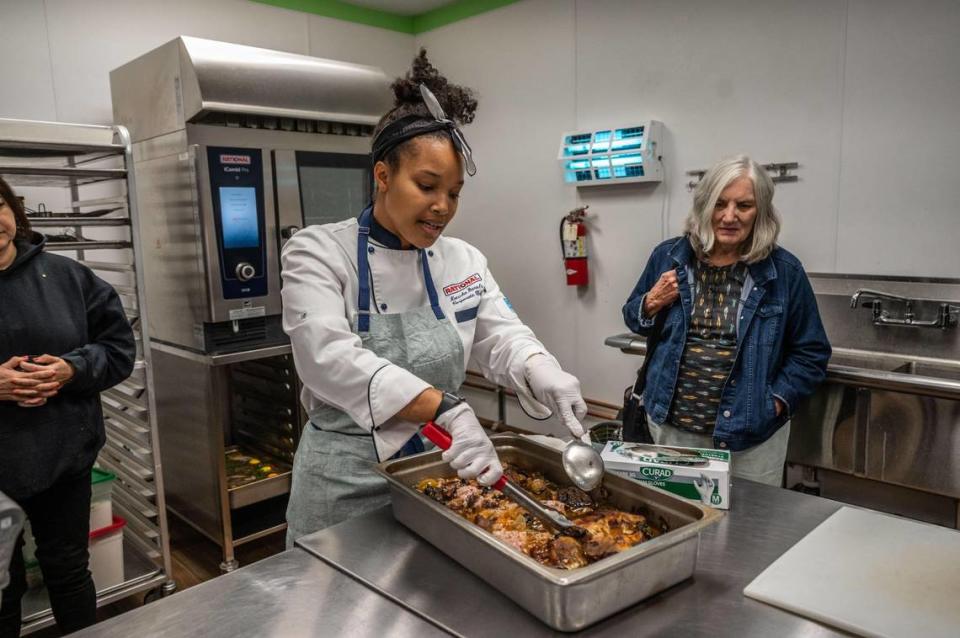
The initial outreach was designed to introduce gas-free cooking, not secure pledges of switching, Sala said. As a result, no Northgate Boulevard businesses has committed to using electric cookers, though Sala said several told her they’d be interested if the cost was abated.
“They were like, ‘we want it, but we can’t afford that. But … if there’s a way that we can get that, we’ll do it,’” Sala said.
SMUD ran a similar program for Northgate and Gardenland residents last year, replacing refrigerators, HVAC units and inefficient windows for free in the neighborhoods’ older homes. The utility provider launched an effort in 2021 to eliminate 100% of its greenhouse gas emissions by 2030, which caused its messaging to switch from promoting energy efficiency to encouraging electric appliances, SMUD Complete Energy Solutions program manager Zach Lawrence said.
THEY’RE FREE, BUT CAN THEY COOK?
That new focus has been met with cautious optimism, said Alfredo Castillo, a SMUD strategic account advisor for Northgate as well as several other neighborhoods.
“So far, honestly, it’s a mixed bag,” Castillo said. “You have a lot of people that are excited about it and they do want something new and they like the technology that’s available, but at the same time you also have certain chefs that are very traditional, and so they’re a little hesitant.”
Combination cookers such as the iCombi Pro and iVario Pro do not produce external heat or affect air quality, can be programmed via a smartphone app and are self-cleaning. They have the potential to save energy while expediting cooking times and improving employees’ quality of life.
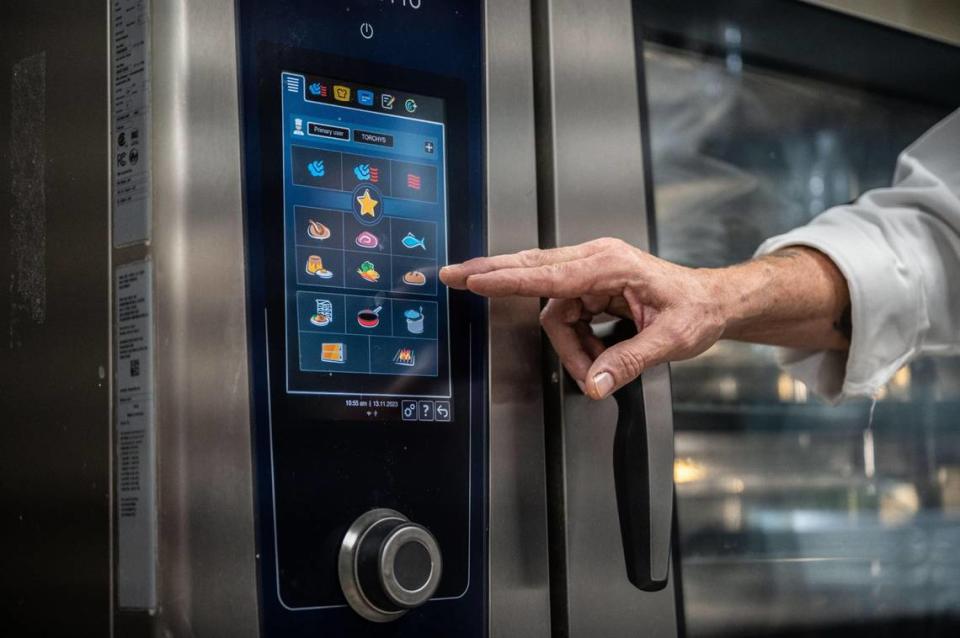
A Stanford University study found that household gas stoves release 76% of their methane when sitting idle, while their nitrous oxide emissions spike with the spark of a flame.
“There are lots of leaks, but also, when you turn on the stove, hear that ‘click click click,’ and you smell gas, most of that gas is unburned methane,” said lead author Eric Lebel, now a senior scientist at Oakland-based PSE Healthy Energy.
Another Lebel-led study released in October 2022 surveyed homes in Sacramento and elsewhere and captured nationwide attention when it indicated California household gas stoves and appliances annually release as much benzene, a carcinogen linked to leukemia, as 58,800 cars. Unlike with cars, though, that benzene mostly stays confined within a home.
Carcinogens aside, a switch to electric appliances can make a cook’s job easier.
The iCombi Pro features touch-screen buttons labeled “octopus” or “carnitas,” which can simultaneously cook those dishes to Rational’s pre-programmed options or users’ specifications. There’s also a “finishing” button to bring dozens of cold plated dishes up the ideal serving temperature at once.
The iVairo Pro, meanwhile, is ideal for grains, sauces and large hunks of meat. The machine can dispense water at the touch of a button if a stew is getting too dried out, air-fry baskets of vegetables or form a bain-marie for sous vide cooking.
These are kitchen appliances, not induction cooktops. Chefs could still conceivably use the iCombi Pro and iVario Pro for most dishes, then revert to gas grills for select items they’re yet not convinced the machines can effectively pull off.
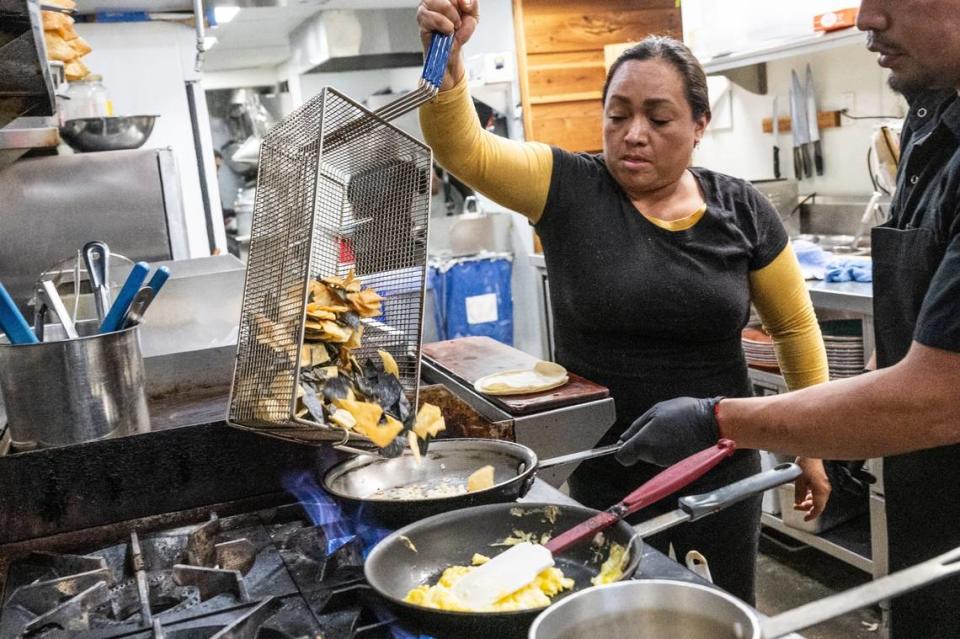
There’s no arguing that the iCombi Pro and iVario Pro are more advanced than traditional kitchen equipment. But they might be too automated for some cooks’ tastes, the way that gearheads prefer cars with manual transmissions over those with automatic.
“There’s just a way that family recipes have been done for generations, and there are concerns that: Is this going to change things?” the chamber’s president, Cathy Rodriguez Aguirre, said.
Delgado said the ingredients, not the cooking method, define a dish. Cooks still prep, season and plate their food, after all. And for what it’s worth, the restaurateur was wowed by the pozole cooked in the iCombiPro.
“It’s about the recipes. The recipe is what says if it’s traditional or not,” Delgado said. “The technique is technique, but it’s the cook, the recipe, the chef that’s going to give it that flavor.”
This story is made possible, in part, with support from the Solutions Journalism Network .

